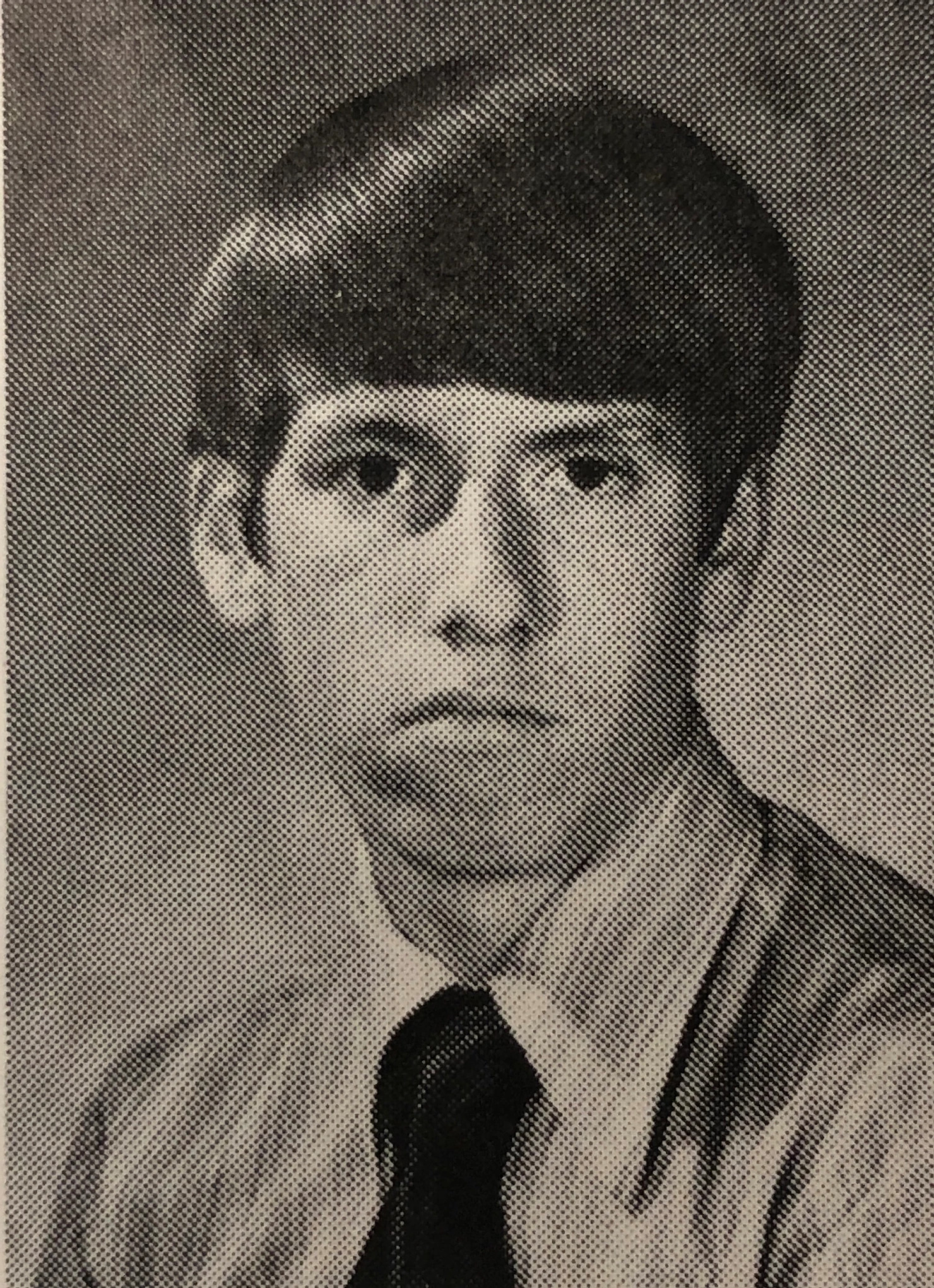By Steve Yarbrough . Indianola Academy, Class of 1975
Steve Yarbrough Indianola Academy, 1975
In the spring of 1966, when I was in third grade at Lockard Elementary, in Indianola, Mississippi, my father informed me that in the fall, I would be attending a different school. The school, which would be named Indianola Academy, hadn’t actually yet been built, he explained, but my fourth-grade class would be meeting at the Methodist Church. I don’t remember what explanation he offered, but it seems likely that the N word figured prominently. The Citizens’ Council—euphemistically known as “The White Collar Klan”—had its origins in my hometown, and he had long since joined the organization.
Others might cloak their racism in talk about providing “quality education” or “upholding our traditions,” but my father voiced his prejudices for all to hear. A few years down the road, he’d have me helping him pass out campaign literature for George Wallace’s presidential run.
Kids typically dislike change, and I was no exception. I didn’t want to go to a different school, because the unknown scared me. But once I discovered that at least a few of my friends would be attending too, I got over my fear. In the wake of that fear, though, another one quickly developed, even as more and more kids who’d initially stayed in the public schools came over to the Academy. It cost a lot more to attend the school than my parents could afford, and they were constantly borrowing to pay the tuition. Every spring, when it came time to fill out the form declaring whether I would attend the following year, my dad was a terror around the house, mad at both my mother and me, snarling about how we’d have to go without food just to keep me away from you know who. Later, when I was living in California, a tenured professor and author of a dark and, so I’ve been told, brutal novel called The Oxygen Man set against the backdrop of a school like the one I’d attended, in a town like the one where I grew up, he told me bitterly that he and my mother hadn’t finished paying off the loans until shortly before my thirty-second birthday. “And for what?” he said. “Just so’s you could make fun of every goddamn thing we believed in.”
Indeed. For what?
The community where I was raised was sixty-five percent African-American, yet I was encouraged to think the majority of those around me were a lesser species, whose presence might somehow contaminate not only the air I breathed but the water I drank—thus, the need for separate water fountains at our local Piggly Wiggly. When I graduated from the Academy, I went to college, where I sat in integrated classrooms and played on a football team on which about half the starters were black. In California, where I taught for twenty-one years, I lived in a town that was only forty percent white and worked at a university whose student body reflected the diversity of the surrounding area. Now I teach at a college in Boston, and while the student body is still more than fifty percent white, Boston itself is now in the majority-minority category and is presently the sixth most diverse city in the country. In other words, once I left the Academy, I began to inhabit the real world, where people of different races are at least tacitly assigned the same value, the present political climate in much of the country notwithstanding.
A colleague of mine at Emerson College, having recently read an article about segregation academies, asked me if I had any pleasant feelings for the school. The answer is that I do. While there, I played football for a coach who went on to earn three Super Bowl rings. Somehow, he helped me discover that I possessed a harder core than I had previously suspected, and this knowledge has served me well in my writing life, especially when my first novel was turned down by forty-three publishers before it finally got accepted and earned favorable reviews in places like Time Magazine and USA Today. I talk to my former coach at least once a week and consider him one of my closest friends. We disagree about a lot of things but really care for each other, and I am grateful I met him when I desperately needed to.
That’s it. The remainder of my emotions associated with that school whose sole reason for existing was to keep me away from people whose skin was darker than my own? They are toxic mix of shame, anger, regret and wonder: how much richer might my life have been if I had been taught from an early age that the differences between me and those who looked different were superficial, the similarities the very thing that makes us human.
Steve Yarbrough, a graduate of Indianola Academy in Indianola, Mississippi, is the award-wining author of seven novels, three short story collections and the nonfiction Bookmarked: Larry McMurtry’s The Last Picture Show, which examines Yarbrough’s academy years. He is a professor at Emerson College in Boston.
